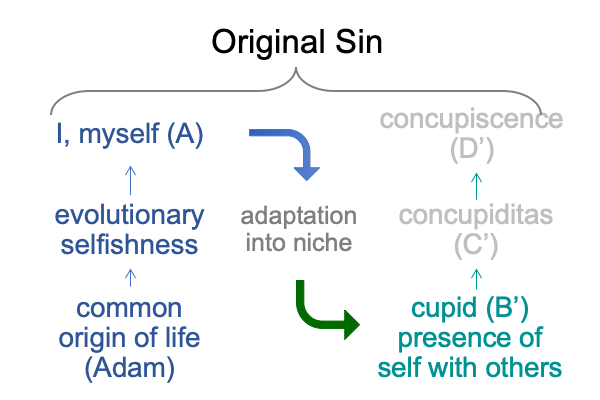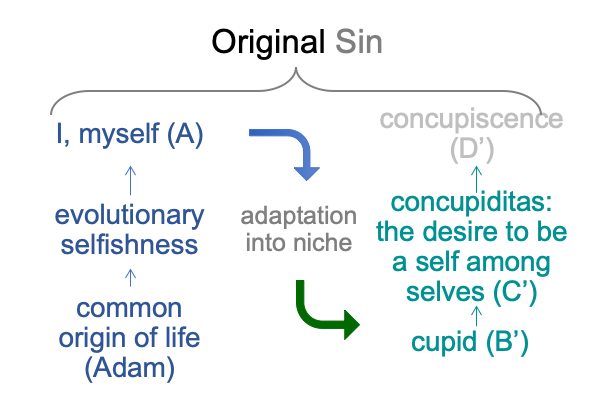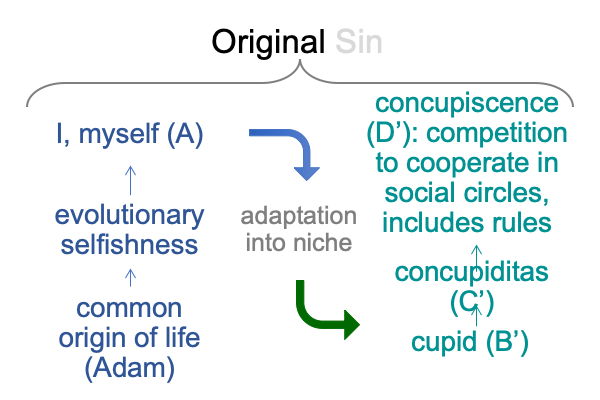Looking at Razie Mah’s (2014) A Primer on the Category-Based Nested Form (Part 4 of 24)
0023 Peirce’s categories label the number of elements. Thirdness has three elements. Secondness has two. Firstness has one.
0024 The three elements of thirdness are relation, actuality and potential. Each category is represented in thirdness. Thirdness exhibits the logics of exclusion, alignment and complement.
0025 The two elements of secondness are contiguous. One real element is contiguous with another real element. For nomenclature, I place the contiguity in brackets: one real element [contiguity] other real element. The contiguity has the character of substance, causality, embodiment, information and so forth. Secondness exhibits the logics of contradiction and noncontradiction.
0026 The one element of firstness can be really goofy. Imagine two frames. In one frame, the canvas is covered with the color gray. The other frame holds a painting of a park in Paris in the middle of summer. Both images belong to firstness.
Here is another way to imagine firstness. Picture a coin. One item has two faces. One can only observe one face at a time. Firstness exhibits logics that are inclusive and allow contradictions.
0027 Here is a picture of the nested form. The categories serve as subscripts.

0028 So, what do the covers for the primers, as well as the masterwork, How To Define The Word “Religion”, portray?
Here is the pattern.

0029 Now, back to education.
I appeal to homeschoolers and private schools.
0030 How does one teach the ten primers as well as the masterwork?
The method is easy. Read and discuss. The text is marked with points. Step by step, both instructor and student can walk together and examine each point. Both will learn along the way.
Timing?
Each point takes one to three minutes.
An assessment of class time may be found in day 23 of this blog.
0031 The advantage?
Right now, so-called “public” schools teach the scientific facts of human evolution, according to a Darwinian picture of descent with modification. But, imagine that the facts constitute an actuality2 that will enter into a category-based nested form.
The following nested form results.

Indoctrination asks the student to recite the facts of human evolution2.
Education asks the student to consider the normal context3 and assess the potential1 underlying the facts2.
Facts are not the same as understanding.























